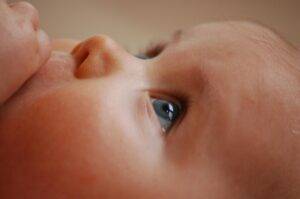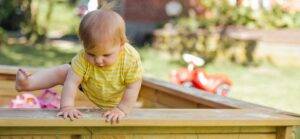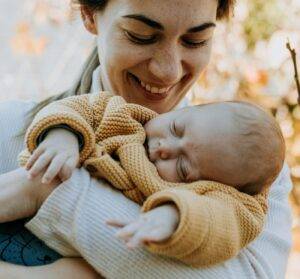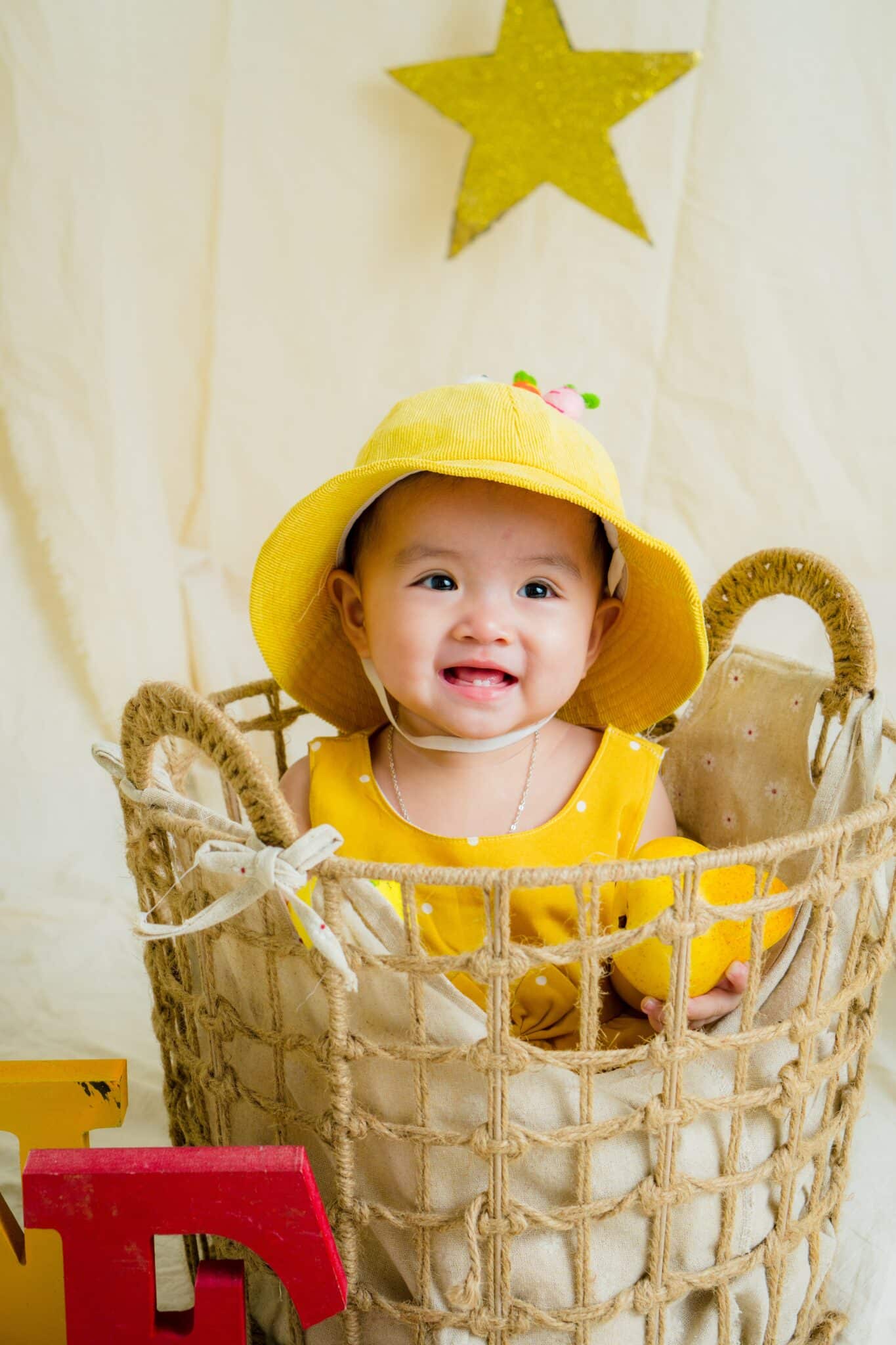Childhood developmental milestones represent significant markers in a child’s growth journey. These milestones offer a roadmap for parents, helping them understand and support their child’s physical, cognitive, and emotional development. By tracking a child’s progress, caregivers recognize when a child is thriving and identify areas needing additional attention. This guide will explore the stages of childhood development, from infancy through the toddler years, and provide strategies to foster healthy growth.
By the end, you’ll understand what to expect as your child reaches critical developmental milestones and how to ensure they receive the needed support to thrive.
What are Developmental Milestones?
Developmental milestones benchmark the child’s ability to perform certain tasks or exhibit specific behaviors by age. These milestones are indicators to monitor a child’s growth across several key domains:
- Physical milestones: Include motor skills, such as rolling over, crawling, and walking. As your child grows, they develop fine motor skills (grasping objects) and gross motor skills (running or jumping).
- Cognitive milestones: Include a child’s ability to think, learn, and problem-solve. Cognitive development reflects how children process information, explore their surroundings, and engage with the world.
- Language milestones: Focus on a child’s ability to understand and use language. From babbling as an infant to forming full sentences as a toddler, language development is a critical part of communication.
- Social and emotional milestones: Measure a child’s ability to form relationships, express emotions, and understand the feelings of others. As children grow, they interact with caregivers, friends, and peers in varied and meaningful ways.
- Adaptive milestones: Also known as self-help milestones, these refer to a child’s independence, such as dressing themselves, feeding, and toilet training.
Every child develops at their own pace. While these developmental milestones offer helpful guidelines, variations are normal. However, significant delays in reaching milestones warrant further evaluation by a pediatrician to ensure potential developmental issues are addressed early.
Why are Developmental Milestones Important?
- Provide Insights into a Child’s Health: Developmental milestones provide valuable indicators of a child’s health and growth progress. How your child plays, learns, speaks, acts, and moves offers important clues about your child’s development. These indicators allow parents and healthcare providers to identify whether a child is growing as expected or whether additional support or interventions are necessary.
- Sets Foundation for Communication for Parents and Pediatricians: Parents regularly discuss the child’s growth and development with their pediatrician. For instance, if a child has difficulty with speech or mobility, discussing their progress with a pediatrician leads to early interventions that improve long-term outcomes.
- Encourage Parents to Get Involved in Their Child’s Development: It empowers parents by giving them the tools to engage with their child’s development. For instance, if parents know their baby should sit independently by around six months, they provide activities that promote core strength and coordination.
This proactive approach encourages healthy development while fostering a stronger bond between parent and child. To understand these developmental milestones fully, let’s break down what parents expect at each stage of development and how they best support their child during these crucial periods.
Developmental Milestones by Age
1. Birth to 3 Months: The Foundation of Early Growth
The first three months of life are filled with rapid growth and adaptation as babies adjust to the world outside the womb. At this stage, developmental milestones center on basic survival instincts and sensory exploration.
- Physical milestones: Babies lift their heads when lying on their tummies and begin to kick or stretch their arms. They should move both arms and both legs freely. This head control is a vital precursor to more advanced movements, like rolling over. They could also open their hands briefly.
- Cognitive milestones: Babies respond to familiar voices, particularly those of their parents. They watch you as you move and track objects with their eyes. They would look at a toy for several seconds. This signifies their brains are effectively processing visual and auditory stimuli.
- Language milestones: Babies make sounds other than crying. They react to loud sounds and make cooing and gurgling sounds. These early vocalizations are important for language development, laying the groundwork for later speech.
- Social and emotional milestones: Babies calm down when spoken to or picked up, smile around 6–8 weeks, responding to your smile and the voices or faces of people they know well. They look at your face and seem happy to see you when you walk to them. This early interaction marks the beginning of a child’s social development and attachment to caregivers.
How Parents Support Development at This Stage
You are your baby’s first teacher! The key to encouraging growth during these early months is providing sensory exploration and bonding. Try these simple activities safely:
- Frequent skin-to-skin contact. Spend time cuddling and holding your baby, making them feel safe and cared for. You will not spoil your baby by holding or responding to their bonding need.
- Respond positively to your baby. Act excited, smile, and talk to them when he makes sounds. This teaches them to take turns “talking” back and forth in conversation.
- Offer safe toys that stimulate their senses (like soft rattles)
- Sing to your baby to develop and understand language.
- Don’t forget tummy time! Laying your baby on their tummy for a few minutes helps strengthen their neck muscles and prepares them for crawling.
2. 4 to 6 Months: Growing Curiosity and Mobility–Discovering the World
As babies move past the newborn stage, they become more interactive and develop motor skills that set the stage for increased mobility.
- Physical milestones: Babies roll over in both directions and begin to sit with support. At the end of this stage, many babies sit independently for short periods.
- Cognitive milestones: Babies become more curious about the world and explore objects by grasping them and bringing them to their mouths. This is a natural and necessary way for infants to learn about their environment.
- Language milestones: Babies experiment with different sounds and babble, combining consonants and vowels (e.g., “ba-ba” or “ma-ma”).
- Social and emotional milestones: Babies develop strong attachments to caregivers and familiar people. They display excitement, like laughing when interacting with familiar people. They like to look at themselves in a mirror. They also understand simple games like peek-a-boo.
Supporting Development at This Stage
Encouraging physical development is as simple as providing ample floor time for your baby to practice rolling, sitting, and reaching for toys. Stimulate cognitive and language development by talking to your baby, narrating your activities, and reading to them regularly. Playing interactive games like “peek-a-boo” helps with social skills.
- Use “back and forth” play with your baby. When your baby smiles, you smile; when he makes sounds, you copy them. This helps them learn to be social.
- “Read” to your baby by looking at colorful pictures and “talk” about them. Respond to them when they babble and “read” too.
- Point out new things to your baby and name them. For example, when on a walk, point out cars, trees, and animals.
3. 7 to 12 Months: From Sitting to Standing–Moving Towards Independence
As babies approach their first birthday, they master more complex motor skills, like crawling and standing. Cognitive and language skills also become more advanced, setting the stage for increased independence.
- Physical milestones: Babies begin to crawl and pull up to a standing position, and some may take their first steps. Fine motor skills, like picking up small objects with a pincer, also develop, meaning using the thumb and forefinger.
- Cognitive milestones: Babies understand object permanence, meaning they realize that things still exist even when they can’t see them. This is why games like hide-and-seek with toys become so engaging for babies at this stage.
- Language milestones: Many babies say their first words. Words like “mama” and “dada” are common, though their meanings aren’t fully understood.
- Social and emotional milestones: Babies experience separation anxiety when away from their primary caregiver, which is a normal part of developing attachments. They also show preferences for specific people and toys.
How to Help Your Child Thrive
To support physical development, create a safe space for your baby to move around and practice new skills like crawling or standing. Provide age-appropriate toys, such as stacking cups or soft blocks, that encourage exploration and fine motor skills and foster cognitive development. Repeating simple words and pointing out objects in their environment will aid in language acquisition.
4. 1 to 2 Years: The Adventurous Toddler
As babies transition into toddlerhood, they become more independent and energetic. This stage is full of exploration, and it’s common to test boundaries as they begin to understand the concept of autonomy.
- Physical milestones: Most toddlers walk independently and begin running, climbing, and using utensils. Fine motor skills, like turning pages in a book or stacking blocks, continue to develop.
- Cognitive milestones: Toddlers solve simple problems and enjoy experimenting with cause-and-effect toys. For example, they learn that pressing a button makes a toy light up.
- Language milestones: Vocabulary grows fast during this time. By age 2, many toddlers use two- to three-word phrases, like “more juice” or “big truck.”
- Social and emotional milestones: Toddlers engage in parallel play (playing alongside other children) and show signs of empathy, like comforting a friend who is upset.
Encouraging Development in Toddlers
Toddlers need plenty of opportunities to run, climb, and explore, so ensure your child has a safe space for physical activity. Reading to your toddler daily and encouraging them to name objects in their environment boosts their language skills. Social development is supported through group activities like playdates or visits to the park.
5. 2 to 3 Years: The Growing Independence

Children become more self-reliant and expressive. They develop a stronger sense of identity and test limits as they learn to navigate social interactions and their emotions.
- Physical milestones: Children run, jump, kick a ball, and refine their fine motor skills by drawing simple shapes or building taller towers with blocks.
- Cognitive milestones: Problem-solving skills improve, and toddlers enjoy imaginative play. They pretend to cook, play with dolls, or act out stories with their toys.
- Language milestones: Children continue to expand their vocabulary and follow more complex instructions. They ask questions and express themselves clearly.
- Social and emotional milestones: Toddlers learn to manage their emotions. While tantrums are common, they express empathy and interact more with peers.
How To Support Your Independent Toddler
Provide ample opportunities for imaginative play, such as giving your child toy kitchen utensils, dolls, or costumes. Encourage creativity through drawing or building with blocks, and be patient as they test boundaries. Offer choices to help them feel in control, such as letting them choose their outfit for the day.
What If My Child Misses a Milestone?
It’s natural for parents to worry if their child isn’t hitting developmental milestones at the expected time. However, be aware that every child grows at their own pace. Occasional delays in one or two areas aren’t always cause for concern. However, if a child consistently misses multiple developmental milestones or is significantly delayed compared to peers, consult a pediatrician for further evaluation.
Learn more about this topic in this article: Child Development Should Be Tracked for Optimal Growth at Pediatrician Visits
Nurture Your Child’s Development at Every Stage of their Growth
Understanding childhood developmental milestones is essential to supporting your child’s growth and well-being. From infancy through toddler years, these milestones provide parents with a guide to monitor their child’s physical, cognitive, social, and emotional development.
While every child is unique and will progress at their own pace, paying attention to these key indicators ensures they are on track and thriving. Parents can help their children reach their full potential by creating a stimulating and nurturing environment. If you have concerns about your child’s development, consult your pediatrician. Early support and intervention make a difference in your child’s growth and long-term success.
For further reading and expert advice on childhood developmental milestones, Omega Pediatrics has a wealth of resources tailored to your child’s needs. Interested more on developmental milestones, this article is worth reading: 11 Key Milestones to Watch For: Parents’Comprehensive Guide in Baby Development







